Related Research Articles

Maze, also known as Maze War, is a 3D multiplayer first-person shooter maze game originally developed in 1973 and expanded in 1974. The first version was developed by high school students Steve Colley, Greg Thompson, and Howard Palmer for the Imlac PDS-1 minicomputer during a school work/study program at the NASA Ames Research Center. By the end of 1973 the game featured shooting elements and could be played on two computers connected together. After Thompson began school at the Massachusetts Institute of Technology (MIT), he brought the game to the school's computer science laboratory in February 1974, where he and Dave Lebling expanded it into an eight-player game using the school's Digital Equipment Corporation PDP-10 minicomputer and PDS-1 terminals along with adding scoring, top-down map views, and a level editor. Other programmers at MIT improved this version of the game, which was also playable between people at different universities over the nascent ARPANET. Due to the popularity of the game, laboratory managers at MIT both played it while also trying to restrict its use due to the large amount of time students were spending on it. There are reports that the Defense Advanced Research Projects Agency (DARPA) at one point banned the game from the ARPANET due to its popularity.

Air Warrior was a multiplayer online combat flight simulation game launched by Kesmai in 1987. It was hosted on GEnie and used that service as a server for client software running on a variety of personal computers. It underwent continual improvement through its decade-long lifetime with Kesmai, appearing on new platforms and host services. Electronic Arts purchased Air Warrior in 1999, and became provider of the game, but it was discontinued in 2001. Sequels Air Warrior II and Air Warrior III were both released in 1997 and published by Interactive Magic.

PanzerBlitz is a tactical-scale board wargame published by Avalon Hill in 1970 that simulates armored combat set on the Eastern Front of World War II. The game, which was the most popular board wargame of the 1970s, is notable for being the first true board-based tactical-level, commercially available conflict simulation wargame. It also pioneered several concepts that would become industry standards.

Laser Squad is a turn-based tactics video game, originally released for the ZX Spectrum and later for the Commodore 64, Amstrad CPC, MSX, Amiga, Sharp MZ-800 and Atari ST and PC computers between 1988 and 1992. It was designed by Julian Gollop and his team at Target Games and published by Blade Software, expanding on the ideas applied in their previous Rebelstar series of games.
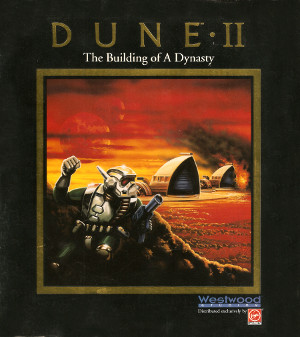
Dune II: The Building of a Dynasty is a real-time strategy Dune video game developed by Westwood Studios and released by Virgin Games in December 1992. It is based upon David Lynch's 1984 film Dune, an adaptation of Frank Herbert's science fiction novel of the same name.

Campaign is a strategy war game developed and published by Empire Interactive. It was released in 1992 for MS-DOS and in 1993 for the Amiga and Atari ST.

Tactical wargames are a type of wargame that models military conflict at a tactical level, i.e. units range from individual vehicles and squads to platoons or companies. These units are rated based on types and ranges of individual weaponry. The first tactical wargames were played as miniatures, extended to board games, and they are now also enjoyed as video games.
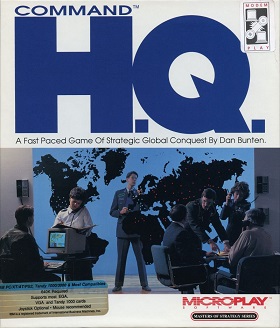
Command HQ is a real-time strategy world domination game. It was released in 1990 by Microplay Software and was created by designer Danielle Bunten.

Wolfpack is a World War II submarine simulator published by Broderbund in the 1990s, for Amiga, Atari ST, DOS, and Macintosh. It simulates combat actions between wolf packs of German U-boats and convoys of Allied destroyers and merchant vessels in the Battle of the Atlantic.

Empire is a 1977 turn-based wargame with simple rules. The game was conceived by Walter Bright starting in 1971, based on various war movies and board games, notably Battle of Britain and Risk. The game was ported to many platforms in the 1970s and 1980s. Several commercial versions were also released, often adding basic graphics to the originally text-based user interface. The basic gameplay is strongly reminiscent of several later games, notably Civilization, which was partly inspired by Empire.
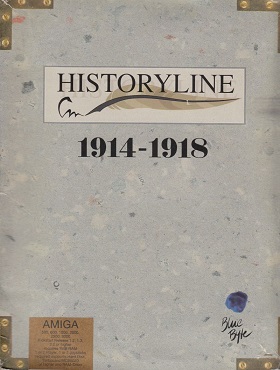
History Line: 1914-1918 is a turn-based tactics computer game released in 1992 by the German team Blue Byte. The storyline takes the player through various battles of the First World War. It uses the software engine based on the better known Battle Isle '93.

TREK73 is a computer game based on the original Star Trek television series. It was created in 1973 by William K. Char, Perry Lee, and Dan Gee for the Hewlett-Packard 2000 minicomputer in HP Time-Shared BASIC. The game was played via teletype. Trek73 is so big that it needs the CHAIN feature of HP2000 BASIC.

The history of the personal computer as a mass-market consumer electronic device began with the microcomputer revolution of the 1970s. A personal computer is one intended for interactive individual use, as opposed to a mainframe computer where the end user's requests are filtered through operating staff, or a time-sharing system in which one large processor is shared by many individuals. After the development of the microprocessor, individual personal computers were low enough in cost that they eventually became affordable consumer goods. Early personal computers – generally called microcomputers – were sold often in electronic kit form and in limited numbers, and were of interest mostly to hobbyists and technicians.
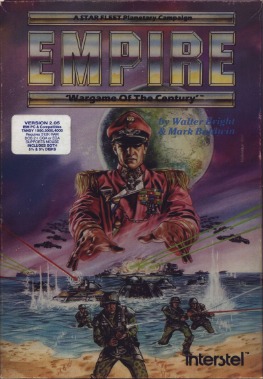
Empire: Wargame of the Century is a video game based on Empire developed by Walter Bright and published by Interstel Corporation in 1987.
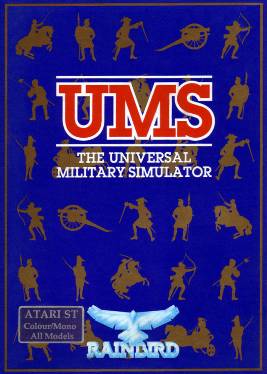
The Universal Military Simulator is a computer game developed by Rainbird Software in 1987 for the Macintosh, Tandy 4000, and IBM PC compatibles. In 1988, both Atari ST, Amiga versions were released. The game was created by Ezra Sidran. The PC and Amiga versions were ported by Ed Isenberg. The game spawned two sequels: UMS II: Nations at War and The War College: Universal Military Simulator 3.
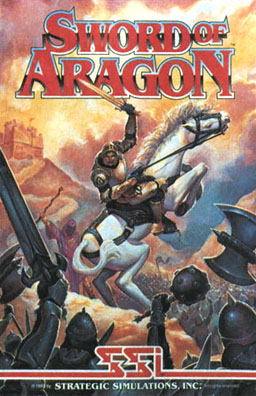
Sword of Aragon is a turn-based strategy and role-playing game developed and published by Strategic Simulations in 1989. It is also considered to be of the 4X genre. Set in the fictional land of Aragon, the games casts its protagonist as the duke of a city named Aladda. After assuming rule over the city and avenging his father's death, the protagonist embarks on a quest to unify the land through conquest. Accomplishing this goal entails developing cities, recruiting armies, and directing the troops on the fields of battle to victory. First published for MS-DOS, the game was ported to Amiga machines. Reception towards Sword of Aragon tended to be more positive than negative; reviewers called it an exciting game, but criticized its method of copy protection and cited problems with its documentation. There were also opinions that the game was more of a niche product, catering to hardcore strategists.

Warlords is computer wargame released in 1990, and the first release in the Warlords video game series. It was created by Steve Fawkner and was developed by Strategic Studies Group (SSG).

Austerlitz is a turn-based strategy video game developed by Personal Software Services and published by Mirrorsoft. It was released in the United Kingdom and Germany for the Amiga, Atari ST and MS-DOS home computers in 1989. It was also re-released in France for Amiga home computers by Mirror Image in 1991. The game is set during the Battle of Austerlitz of the Napoleonic Wars and revolves around Napoleon's forces defending the Austrian village of Austerlitz from the invading army of Alexander I of Russia.

Wander is text adventure written by Peter Langston in 1974. It is one of the earliest text adventure video games in existence, predating Colossal Cave Adventure. The game was originally coded in BASIC on a mainframe computer with multiple databases to create the worlds that formed the game. It was distributed in Langston's PSL Games collection for Unix.
References
- ↑ Langston on Empire vs Empire, Peter Langston, 2011-01-15
- ↑ "Subject: The birthdate of Empire" (TXT). Wolfpackempire.com. Retrieved 24 May 2018.
- 1 2 3 4 5 6 "Wolfpack Empire - History". Wolfpack Empire. Retrieved 2017-01-20.
- 1 2 Gray, Chris (2005-04-24). "Compilers and Programming Languages". GraySage.com.
- ↑ "Subject: Re: The birthdate of Empire" (TXT). Wolfpackempire.com. Retrieved 24 May 2018.
- 1 2 "Index of /". Empire.floogle.net. Retrieved 24 May 2018.